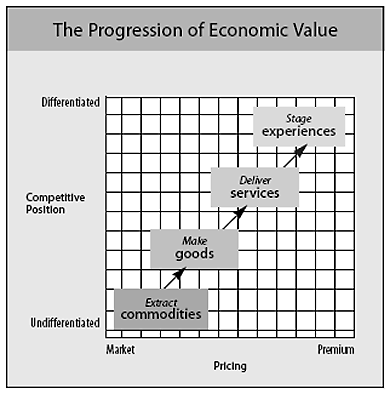Are you experiencing this?
In a recent interview, the head of insurance giant MetLife’s Customer Experience group opined that:
No doubt this is partly confirmation bias and PR, because what we do takes an overweighted importance in our own minds; however, there is data to support this claim. The Signs.com Branded in Memory project asked 150 Americans to draw ten famous logos from memory; only 16% of people drew accurate ones.

Ultimately, however, this doesn’t matter, nor does the comparison make any sense.
It’s a confusion, a misunderstanding of strategy. Customer experience (CX) and/ or experience design (XD) have emerged as a discipline that many agencies, especially digital ones, are moving to offer.
As a new discipline, it is not well defined. We recently spoke on this at a conference in Lithuania and attempted to crystallize this blurriness.
According to Wikipedia, experience design is
“designing products, processes, services, events, omnichannel journeys, and environments” and draws from “psychology, linguistics, cognitive science, architecture, haptics, design, information architecture, ethnography, marketing, brand strategy, strategic management, strategy consulting, storytelling, lean startup, technical communication, and design thinking”.
Phew. I can’t imagine anyone is vaguely qualified to do whatever this seems to be talking about.
Thanks to King, Feldwick and others, we have long understood that brands are an assemblage, the sum of all interactions with a company, that form a set of associations around the product or service that drive decisions and price premiums.
What then, is customer experience as a stand-alone concept? Can it somehow replace the need for brand communication?
We built a simple bowtie model to see how experiences fit within the spectrum, from the most direct ones — using products — to the least direct — seeing advertising.
Customer experience exists on the product side, when customers engage with companies to navigate choices, buy and use the service, or get questions answered and problems solved, increasingly through digital interfaces.

Brand experiences reinforce brand values outside service interactions, leveraging the depth of an event (or VR installation), as a counterpoint to the breadth of advertising.
Thus, experiences straddle the gap between products and promises. This gap gets ever wider due to the rise of the ‘Unreasonable Consumer’, who cannot understand why all companies she deals with can’t be as simple to use as Uber, and to the increased aversion to digital advertising.
This is what led to the first wave of app-vertising, as agencies tried to plug emerging holes in the experience from the outside with mobile applications. These mostly failed because they weren’t tied into the company’s internal systems.
The suggestion at the top is that these digital experiences are so compelling they spread word of themselves through the mediascape, alleviating the need for advertising. Look to Uber and Google and Amazon, to Bezos saying “advertising is a tax you pay for having an unremarkable product” [also attributed to Geek Squad founder Robert Stephens, who seems to have said it in public at a conference at least once in 2007. Not clear if Bezos ever said it].
This is why digital agencies and consultancies are pivoting into experience design, and why Accenture wants to be the ‘experience agency of record’, as it now is for Maserati.
Ignoring the fact that new companies tend to rely on PR driving non-traditional comms when small and then move into broadcast as they scale, it also overlooks the way advertising shapes experiences.
Our experiencing self is different to our remembering self. We don’t remember experiences, but highly truncated stories of the memories, anchored to the peak and end. Those stories can be shaped after the fact because when we recall memories, that also changes the memory.
And it is the remembering self that makes the decisions.
When we have a bad experience, and see an ad proclaiming a brand is customer obsessed, that dissonance has a negative impact on our story. This is why loyalty advertising doesn’t work.
But we mostly have functional, nondescript customer experiences that we forget. Thus, they can be shaped by small gestures (the warm cookie at the DoubleTree Hotel) and big advertising ideas.
Time Saved versus Well Spent

Perhaps the first to see our current obsession with experiences coming and propound them as a separate economic class were the co-authors of the prescient business book The Experience Economy in 1998. They map it as a progression from functional goods and services.
Much more recently, one of the authors, Joe Pine, published a refinement to the model, establishing a key point when considering customer service vs experience — what’s the users goal?
Good services get you from A to B as quickly and easily as possible — that’s what makes a good customer service experience. Good experiences create a different
I’ve come to understand that THE key distinction between services and experiences is all about time.Services are (merely) time well saved. Experiences are about time well spent.

The danger is in conflating the two, trying to lever in unnecessary ‘experiential’ bells and whistles into something that should striving to be as simple as possible. Understanding where a brand can add value rather than merely a users’s wasting time is crucial.
You don’t need your customer to draw a logo from memory, you want them to see it and have the memory structure, the stories, activated to drive purchases. You can shape the story of the memory by understanding how experiences and advertising interact.



